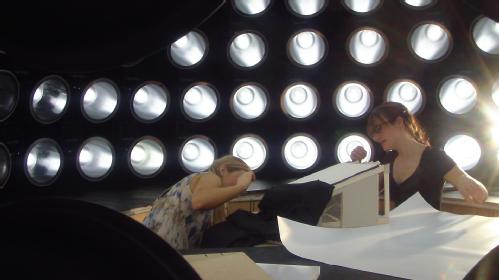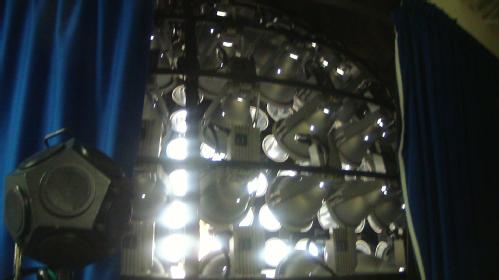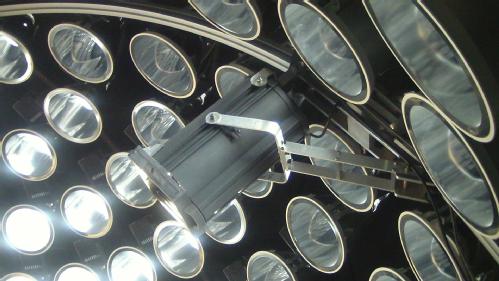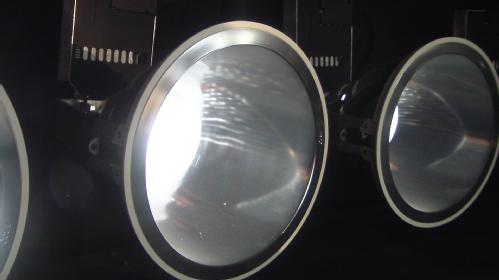The Sky Project
University College Dublin, Thursday 10th November 2011
The Visit
On Thursday 10th November I visited The Sky Project at University College Dublin to see their Artificial Sky. The purpose of the visit was to see the types of facility available and see how it relates to my own project which looks at recreating illumination scenarios to assess the readability of in vehicle displays.
The simulator is used by the school’s undergraduate students as a design tool to assess the impact of daylight on building design using scale models.
I found the visit incredibly useful, not just to see the simulator in operation, but to spend time talking with someone with an in-depth knowledge and understanding in the field of daylight simulation.
The Simulator
The Artificial Sky is a 4m diameter, 6 segment dome comprising 145 diffused luminaires following the Tregenza subdivision of the sky. It sits on a 1m high platform that enables lighting assessments of subterranean rooms and is enclosed by a blackout curtain.

The maintenance of the simulator is fairly simple and involves the 145 lamps being replaced every 6months and focused every year.

The simulator can achieve an Illuminance of 57 klux and sky coverage of 30% with respect to gaps between luminaires. Any measured sky condition can be generated but they generally use 15 predefined CIE standard skies with the addition of a sun simulator.
The sun is simulated with a theatrical lamp on a track running along the framework of the dome. The 'sun' runs along the track to simulate the solar altitude and the model turns on a heliodon to simulate the solar azimuth. The solar position with respect to the model can be simulated for any time of day/year based on solar time.

The maximum size of models assessed in the simulator is approximately 300x600mm due to parallax errors. These errors are reduced by spectral dispersal focus of the luminaires as there is less waste of light. It will also be reduced by changing the diffusers for each luminaire and eliminating the reflections from the silver ring in front of each diffuser. The errors are reduced when simulating an overcast sky but they increase towards a clear sky model.

Sky measurement
The Sky Project is in the process of setting up a Sky Monitoring Station to record real dynamic sky data. This data can then be programmed to run through the Artificial Sky.
Real sky data is being recorded and processed by the Sky Project using the ProMetric PM-1400 CCD camera with a Kodac KAF-1001E sensor and a Sigma 8mm EX Fisheye lens.
This system utilises 693,048 pixels of a possible 1,045,506. Each pixel represents an individual and simultaneous measurement of sky luminance, compared to PRC-Krochmann & EKO sky scanners (utilised by the International Daylight Measurement Program) which only record the sky luminance at 145 points over 11° Field of View in 30 seconds.
The IDMP stations are considered unreliable; In the 30 seconds it takes to scan, the sky will have changed quickly and will differ considerably from sector to sector.
